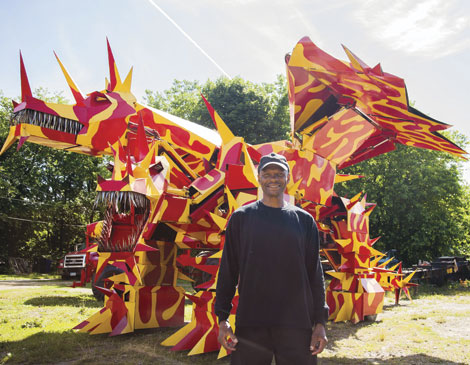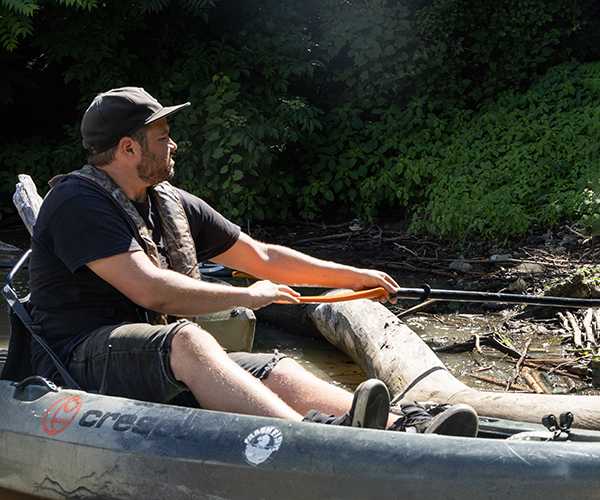In Timothy Willis’ front yard, a monstrous 10-foot red and gray metal dog and its owner, a 16-foot 8-inch robot, stand guard.
Beside them is a two-headed dragon, painted brightly in splashes of red and yellow. Its heads, each with 152 teeth, pivot left and right between its 30-foot wingspan, keeping watch from the grassy lot on East 83rd Street in the Fairfax neighborhood. A menagerie of souped-up monster vehicles, all painted in his signature ketchup- and mustard-indebted palette, surround the machines.
“When I was a kid, I always wanted Tonka toys, but we couldn’t afford them,” Willis says. “I said, ‘When I grow up, I’m gonna make my own Tonka toys.’ ”
Since he started building in 2004, Willis has become a fixture at local events, visiting more than 45 shows a year. There, he shows off his toys’ tricks, from the dragon that lifts its double heads, flaps its wings and walks at a slow, menacing pace to the monster vehicles that blare bass-heavy music while popping wheelies.
By 15, Willis lost his father and three siblings to Marfan Syndrome, a rare genetic disorder affecting the body’s connective tissue. Diagnosed with the same disease and not content to “sit around and wait for my turn,” he dropped out of East Technical High School in ninth grade and dove into tinkering.
Willis’ passion led him from repairing and racing muscle cars to working as a hype man for Clear Channel Entertainment monster truck shows in the ’80s and ’90s. A self-taught engineer-cum-artist with a touch of mad scientist flair, he began building his larger-than-life robots as a way to push himself creatively. “I need a challenge, to challenge my state of mind,” he says.
Inspired by 1999’s Wild Wild West, Willis built the first of his eight robots, a mechanical spider based on one in the film. Today his robots and 28 monster vehicles sit in a West Side warehouse and the East 83rd lot, where he tore down his childhood home to claim the land for commercial use.
Willis never sketches his plans. Drawing on construction site observations and a knowledge of industrial mechanics, he starts with an idea and sees how he can repurpose a hydraulic pump or recreational vehicle engine to make his creature move. Through trial and error, he reworks old cars, metal sheets and wire spools from junkyards for 16 to 18 hours a day.
“I see the way cranes work and then I see a movie like Wild Wild West and see that spider,” he says. “I know that’s the movies, but that can be real. I can make that work.”
Willis always talks to aspiring tinkerers. “I tell [kids] all the time, ‘I was very good at math and science. Learn how things work,’ ” he says. “Every machine I looked at, I watched its functions and how they move.”
Approaching 60, Willis is still pushing. “I always wanna excite the crowd: something different, something amazing,” he says. “I knew I wanted to do something better — always.”




